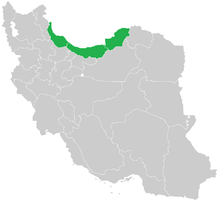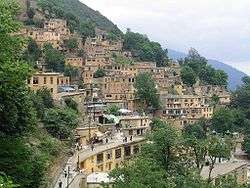Northern Iran

Northern Iran includes the Southern Caspian regions representing provinces of Gilan, Mazandaran, and Golestan of Iran (Ancient kingdom of Hyrcania, medieval region of Tabaristan).
The major provinces, Gilan and Mazandaran, are covered with dense forests, snow-covered mountains and impressive sea shores. The major cities are Amol, Bâbol, Anzali, Rasht, Câlus, and Sâri. Northern Iran has numerous villages, particularly Massulé, appreciated by travellers.
Northern Iran was a trendy spot during the Pahlevi era, especially amongst foreign tourists. It was a luxurious place that provided all types of modern recreational facilities as well as tourism infrastructure. Today, it’s mostly visited by domestic tourists.
Climate
- Plain moderate climate: covering central and western plains of Mazandaran. The average annual rainfall amounts to 1200 or 1300 millimetres, and as we proceed to the east the amount decreases.
- Mountainous climate: the high mountains and northern parts of the Alborz range. In the heights, the weather is cold mountainous and most of the precipitation is in the form of snow.
- Semi-arid climate: This climate prevails some parts of Gorgan valley (north of Gorgan Rud as far as the Turkmenistan border). In this area, the average annual rainfall stands at 500 millimetres.
Gallery
-

A map of the Caspian region by al-Istakhri
-
Ghal'eh Rudkhan, Gilan
-
_4.jpg)
Ghal'eh Rudkhan, Gilan
-

Masouleh village, Gilan
-

Do Ab, Mazandaran
-
Alangdarreh forest, Gorgan, Golestan
-
Tureng Teppe village, Golestan